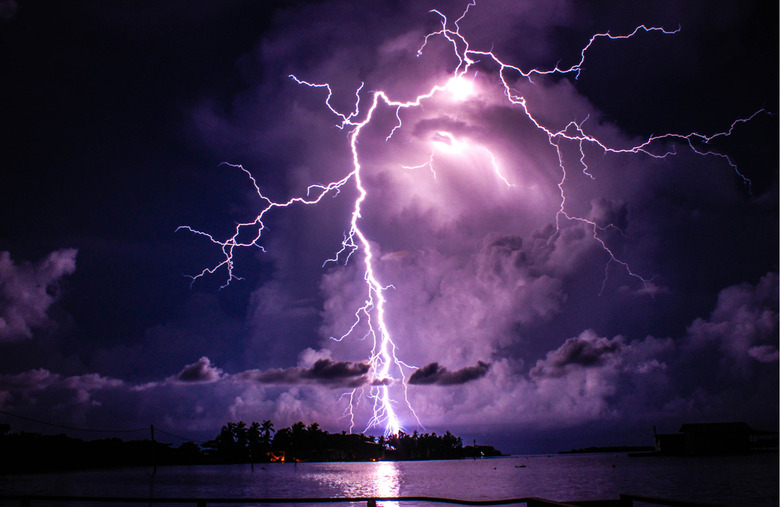Lightning Strikes This River 280 Times Per Hour, 260 Nights Per Year
A lightning storm rages almost constantly at the mouth of the Catatumbo River in northern Venezuela, with bolts striking up to 280 times per hour for 10 hours a day, on 260 nights every year. That's 28 lightning strikes per minute for those nights — and about 1.2 million lightning strikes each year.
Venezuela, home of the delicious pabellón criollo, has been experiencing the Catatumbo lightning for hundreds of years now. It comes from storm clouds that amass more than 3,200 feet above the spot where the Catatumbo River flows into Lake Maracaibo. According to meteorologists, winds going across the lake and its surrounding swamps are likely responsible for the storms. The swamps are plains surrounded by mountains — the Andes (home of the first cultivation of quinoa), the Perijá Mountains, and the Cordillera de Mérida — and the combination of heat and moisture in the area creates electrical charges that — when met with wind destabilized by the mountain ridges — turns into lightning and thunderstorms.
Light flashes from the storm can be seen up to 25 miles away, earning the phenomenon the nickname "The Maracaibo Beacon," and it's been used by ships for navigation as a result.
The frequency of the lightning strikes changes both within the year and from one year to the next. October's wet season is peak time for the storms, while they generally calm down in January and February. In fact, there was a break in the storm due to a drought between January and March of 2010, and locals feared that the phenomenon was over for good.
The Catatumbo lightning holds a special place in the heart of Venezuelans, because it may have been partially responsible for the nation's independence. An attempted surprise attack led by British navigator Sir Francis Drake on the Spanish army was spoiled by the bright lightning one night in 1595, a story that was later recounted in Lope de Vega's epic La Dragontea a few years later. Years later, in the early nineteenth century, the Spanish army itself attempted a sneak attack on Maracaibo in order to take back the country towards the end of the Venezuelan War of Independence. Again, the Catatumbo lightning lit up the landscape, thwarting the invasion and allowing Venezuela's beloved revolutionary hero, Simón Bolívar, and his fleet to win one of the last and most important battles in the wars against the Spanish for independence.
The Catatumbo lightning has also been responsible for producing more ozone at the mouth of the Catatumbo than any other place in the world. Scientists have expressed doubt, however, that this will have any effect on the world's ozone layer, due to the lightning's instability. Its effect on tourism, however, is not in doubt, as sightseers have flocked to the region to join nighttime tours to see the lightning. It's a great addition to any South American itinerary.
